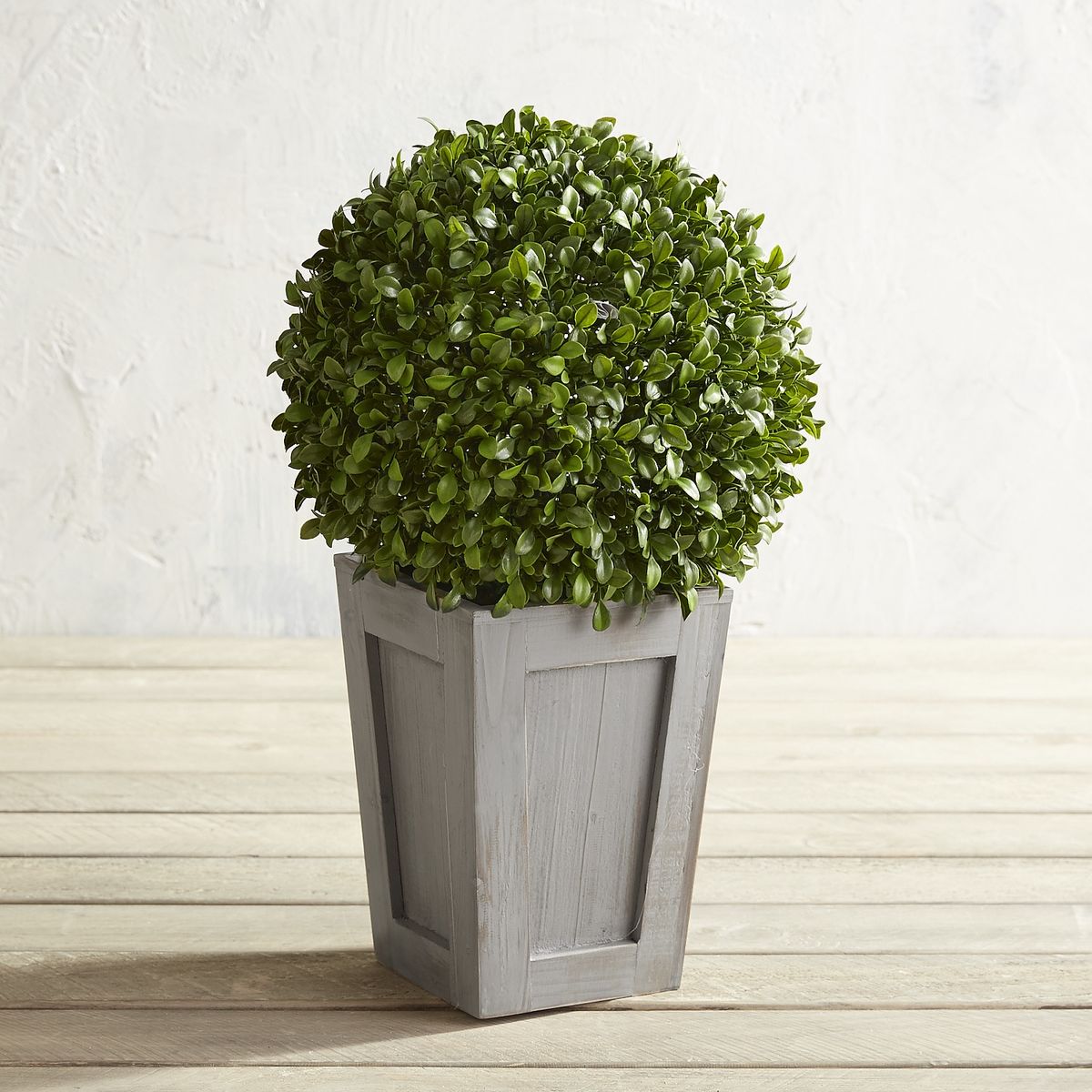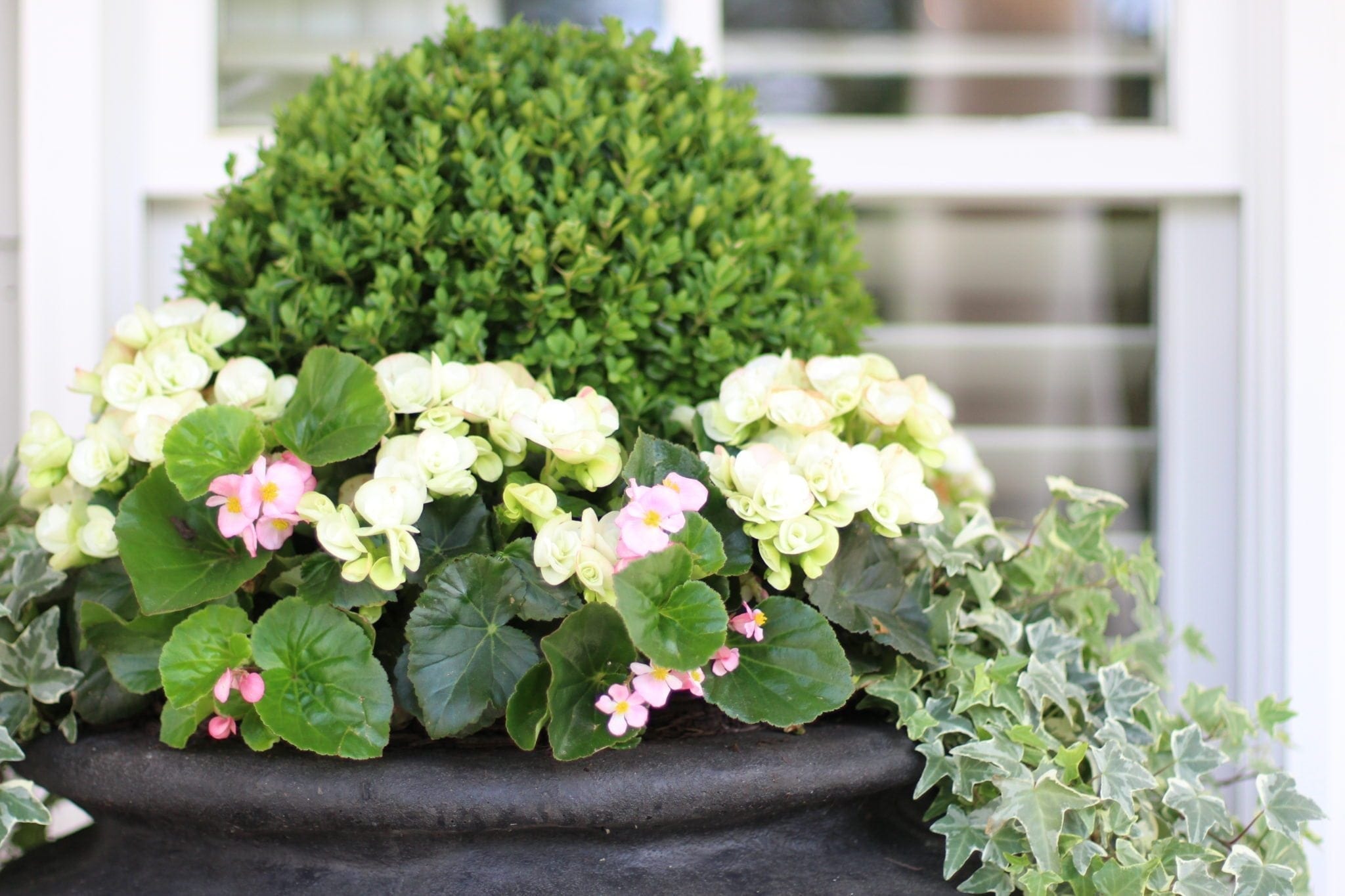Boxwood in planter ideas presents a captivating fusion of horticulture and aesthetics, offering boundless opportunities for creating stunning outdoor spaces. This comprehensive guide delves into the intricacies of selecting, planting, and arranging boxwood in planters, empowering you to transform your outdoor haven into a verdant oasis.
As we embark on this horticultural journey, we’ll explore the key design elements to consider, delve into the optimal planting and maintenance techniques, and showcase a myriad of creative arrangement ideas. Along the way, we’ll uncover the secrets to incorporating boxwood into planters harmoniously, ensuring their health and vibrancy for years to come.
Design Considerations

When selecting boxwood for planters, consider key design elements like size, shape, and overall aesthetic. Different planter designs complement specific boxwood varieties. Scale and proportion are crucial for balanced arrangements.
Boxwood is a versatile evergreen shrub that can be used in a variety of planter ideas. Its compact size and slow growth habit make it ideal for small spaces, and its dense foliage can create a formal or informal hedge.
For a more dramatic effect, consider planting boxwood in an around tree planter box . This will create a focal point in your garden and add height and interest to your landscape. When choosing a planter for your boxwood, be sure to select one that is large enough to accommodate the root ball and allow for proper drainage.
Size and Shape
- Smaller planters suit dwarf boxwood varieties like ‘Suffruticosa’ or ‘Green Gem.’ They add texture and interest without overpowering the container.
- Large planters accommodate larger boxwood cultivars like ‘Green Mountain’ or ‘Winter Gem.’ Their dense foliage creates a bold statement.
- Tall, narrow planters benefit from columnar boxwood varieties like ‘Fastigiata’ or ‘Pyramidalis.’ They add height and structure to vertical spaces.
- Round or square planters pair well with spherical boxwood varieties like ‘Buxus microphylla var. koreana’ or ‘Green Velvet.’ They provide a touch of softness and symmetry.
Overall Aesthetic
- For a formal, structured look, opt for boxwood varieties with tightly clipped, geometric shapes like ‘Suffruticosa’ or ‘Winter Gem.’ They create a sense of order and sophistication.
- For a more informal, natural look, choose boxwood varieties with looser, flowing shapes like ‘Green Mountain’ or ‘Green Velvet.’ They bring a touch of whimsy and organic beauty.
- Consider the surrounding landscape and architectural style when selecting boxwood for planters. Matching the aesthetic creates a cohesive and harmonious outdoor space.
Scale and Proportion, Boxwood in planter ideas
- Maintain a balance between the size of the boxwood and the planter. Overcrowding or dwarfing the plant can detract from its aesthetic appeal.
- Consider the overall height and width of the arrangement in relation to the surrounding area. Boxwood should complement the scale of the space, not overwhelm it.
- Use taller boxwood varieties as focal points or to create privacy screens. Smaller varieties work well as edging or filler plants.
Planting and Maintenance Techniques: Boxwood In Planter Ideas

Boxwood in planters thrives when provided with optimal soil conditions, drainage, and sunlight. Understanding these factors and implementing proper planting and maintenance practices ensures healthy growth and a visually appealing display.
The ideal soil for boxwood in planters is well-drained, fertile, and slightly acidic, with a pH range of 6.0 to 7.0. It should be rich in organic matter, such as compost or peat moss, to provide essential nutrients and improve water retention.
Drainage
Adequate drainage is crucial to prevent root rot and other issues caused by excessive moisture. Choose planters with drainage holes to allow excess water to escape. If necessary, add a layer of gravel or broken pottery to the bottom of the planter to further improve drainage.
Sunlight
Boxwood prefers full sun to partial shade. In areas with intense sunlight, provide afternoon shade to prevent scorching of the leaves. In colder climates, full sun exposure is ideal for optimal growth.
Planting
- Fill the planter with well-drained potting mix, leaving about 2 inches of space from the rim.
- Dig a hole twice the width of the root ball and just as deep.
- Gently remove the boxwood from its container and loosen any circling roots.
- Place the boxwood in the hole and backfill with soil, firming it gently around the base.
- Water deeply to settle the soil and remove any air pockets.
Ongoing Care
- Watering: Water regularly, especially during hot, dry weather. Allow the soil to dry out slightly between waterings.
- Fertilizing: Fertilize boxwood in planters monthly during the growing season with a balanced fertilizer.
- Pruning: Prune boxwood as needed to maintain its desired shape and size. Prune in the spring or fall, removing dead or damaged branches and shaping the plant as desired.
Creative Arrangement Ideas

Boxwood’s versatility extends beyond its classic hedge form, allowing for creative arrangements in planters. These ideas enhance outdoor spaces, adding sophistication and visual interest.
Topiary designs, a timeless art form, transform boxwood into intricate shapes, from whimsical animals to elegant spirals. Planters provide a contained environment for these sculpted masterpieces, showcasing their artistry.
Formal Arrangements
- Symmetrical Pairs: Flanking entrances or pathways, symmetrical boxwood planters create a sense of order and grandeur. Trimmed into formal shapes, they frame the space with a polished elegance.
- Boxwood Balls: Perfectly round boxwood balls atop tall planters add a touch of whimsy and sophistication. Their spherical shape creates a focal point, drawing the eye upwards.
Informal Arrangements
- Cascading Forms: Boxwood’s cascading growth habit lends itself to arrangements that flow over the edges of planters. Spilling foliage adds a touch of softness and movement.
- Mixed Plantings: Companion plants, such as trailing ivy or blooming annuals, complement boxwood’s evergreen foliage. These combinations create a dynamic and visually appealing display.
- Artistic Formations: Free-form arrangements allow for boundless creativity. Boxwood can be shaped into abstract sculptures or arranged in unconventional patterns, adding a touch of the unexpected.
Decorative Elements
Incorporating decorative elements enhances the aesthetic appeal of boxwood arrangements. Consider using:
- Planter Materials: Choose planters made from materials such as terracotta, stone, or metal to complement the style of your arrangement.
- Accessories: Add decorative touches like ribbons, bows, or small ornaments to personalize your planters and create a festive atmosphere.

The refined aesthetic of boxwood in planter ideas often invites exploration into elevating their display. For those seeking a sophisticated and space-saving solution, diy a frame plant stand offers a stylish way to showcase boxwood planters. Its angled design not only adds visual interest but also allows for optimal sunlight exposure, ensuring the continued health and beauty of these elegant evergreens.
Boxwood in planters is a classic choice for adding a touch of greenery to your home or patio. These versatile plants are easy to care for and can thrive in a variety of conditions. For a more lifelike touch, consider adding a real touch orchid plant to your planter.
These artificial orchids are made from high-quality materials that give them a realistic appearance and feel. They’re also incredibly durable, so you can enjoy their beauty for years to come. When combined with boxwood, real touch orchid plants create a stunning and sophisticated arrangement that will add a touch of elegance to any space.